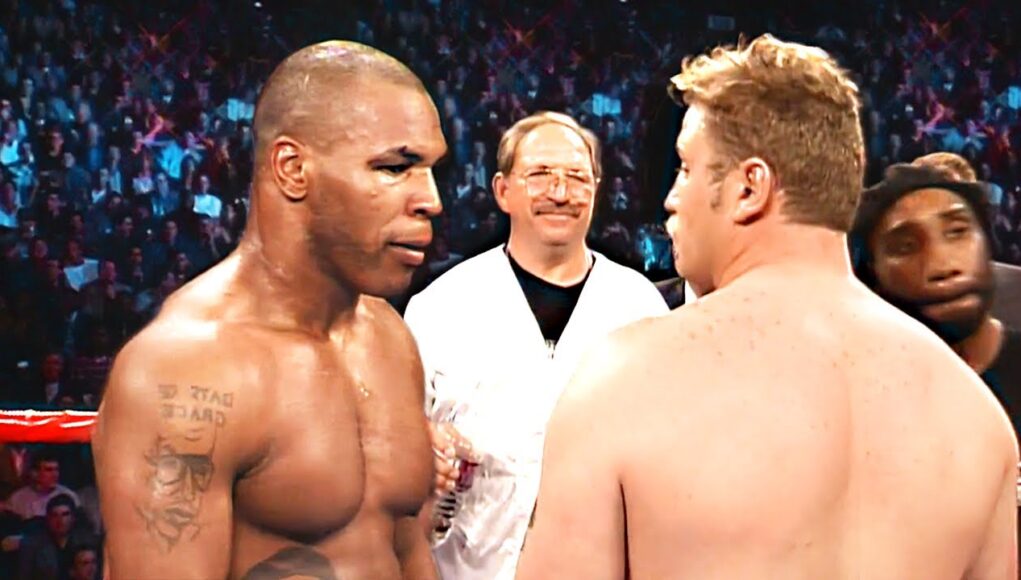Mike Tyson’s bout against Francois Botha took place on January 16, 1999, at the MGM Grand Garden Arena in Las Vegas, Nevada. This fight marked Tyson’s return to the ring after a significant layoff due to legal issues. Tyson, with a record of 45-3, sought to reassert his dominance, while Botha, with a record of 39-1, was determined to capitalize on the opportunity to defeat a boxing legend. Let’s dive into a detailed, round-by-round account of this notable fight in a casual, storytelling voice.
Build-Up to the Fight
The anticipation for Tyson vs. Botha was palpable. Tyson had been out of the ring for over a year, and fans were eager to see if he still had the ferocity and power that made him a legend. Botha, known as the “White Buffalo,” was a tough South African fighter with a solid record and a reputation for resilience. The atmosphere in Las Vegas was electric, with fans and media buzzing about Tyson’s return and the potential for an upset.
Round 1: Botha’s Confidence
The bell rang for the first round, and Botha came out confidently, moving around the ring and using his jab effectively. Tyson, in his trademark black trunks, immediately began to press forward, looking to land his powerful hooks and uppercuts.
Botha surprised many by not backing down. He kept his jab in Tyson’s face and landed a few solid right hands. Tyson, looking a bit rusty, missed with some wild swings but managed to land a couple of heavy shots to Botha’s body. Botha, however, kept his composure and continued to use his jab to keep Tyson at a distance.
The round ended with Botha showing he was not intimidated by Tyson’s reputation. The crowd was buzzing, sensing that Botha was here to fight and not just survive. Tyson’s aggression was evident, but Botha’s confidence and effective jabbing made it an interesting start.
Round 2: Tyson’s Aggression
The second round began with Tyson coming out more aggressively. He moved in quickly, trying to slip Botha’s jabs and land his trademark hooks. Botha, however, continued to use his jab effectively, keeping Tyson at bay and landing a few clean shots to Tyson’s head.
Tyson managed to close the distance and landed a powerful right hook to Botha’s body, causing him to wince in pain. Botha responded with quick counters, but Tyson’s relentless pressure was beginning to show. The two fighters exchanged heavy blows, with Tyson landing hooks and uppercuts while Botha fired back with jabs and right hands.
The crowd was on its feet, cheering for both fighters—Tyson for his relentless aggression and Botha for his resilience and skill. The round ended with both fighters having their moments, but Tyson’s pressure was starting to make a difference.
Round 3: Botha’s Tactics
As the third round commenced, Botha continued to use his jab and movement to keep Tyson at a distance. He landed several clean shots to Tyson’s head, snapping his head back. Tyson, trying to find his rhythm, pressed forward but was met with stiff resistance from Botha.
Botha began to clinch more, trying to disrupt Tyson’s rhythm and tire him out. Tyson, frustrated, pushed Botha off and landed a few hard shots to Botha’s body. The referee had to step in several times to break the clinches, warning Botha about excessive holding.
The round ended with Botha’s tactics working to some extent, as he managed to frustrate Tyson and land several clean shots. The crowd was buzzing, sensing that Botha was not going to be an easy opponent for Tyson.
Round 4: Tyson’s Frustration
The fourth round began with Tyson continuing to press the action. Botha, using his jab and footwork, kept Tyson at a distance and landed several clean shots to Tyson’s head and body. Tyson, showing his frustration, missed with several wild swings.
Botha continued to clinch and hold, trying to neutralize Tyson’s power. Tyson, visibly frustrated, pushed Botha off and landed a few hard shots to Botha’s body and head. The referee stepped in several times to break the clinches, warning both fighters to keep it clean.
The round ended with Botha’s tactics continuing to frustrate Tyson. Botha was landing clean shots and managing to disrupt Tyson’s rhythm. The crowd was sensing that the fight was more competitive than they had anticipated.
Round 5: The Knockout
The fifth round began with Tyson coming out with a renewed sense of urgency. He pressed forward aggressively, looking to land a knockout punch. Botha, continuing to use his jab and movement, kept Tyson at a distance and landed several clean shots to Tyson’s head and body.
Midway through the round, Tyson finally found his opening. He slipped inside Botha’s jab and landed a powerful right hand that sent Botha crashing to the canvas. The crowd erupted as the referee began the count. Botha, looking dazed and disoriented, struggled to get to his feet but was unable to beat the count.
The referee waved off the fight, declaring Tyson the winner by knockout. The crowd went wild, celebrating Tyson’s triumphant return to the ring. Tyson had shown that despite his time away from the sport, he still possessed the power and aggression that made him a legend.
The Aftermath
Tyson’s victory over Francois Botha was a significant moment in his comeback. With 46 wins and 40 knockouts in his first 49 professional fights, Tyson showed the world that he was still a force to be reckoned with in the heavyweight division. His performance against Botha solidified his reputation as a devastating knockout artist.
For Botha, the fight was a tough loss, but he had the distinction of facing a future legend. Tyson’s ability to dismantle his opponents with such ease was a testament to his training and natural talent.
Legacy of the Fight
The fight against Francois Botha was an important step in Tyson’s comeback. It showcased his incredible power, relentless aggression, and ability to overcome adversity. This fight, like his previous bouts, was a clear indication that Tyson was determined to reclaim his position as the undisputed heavyweight champion.












